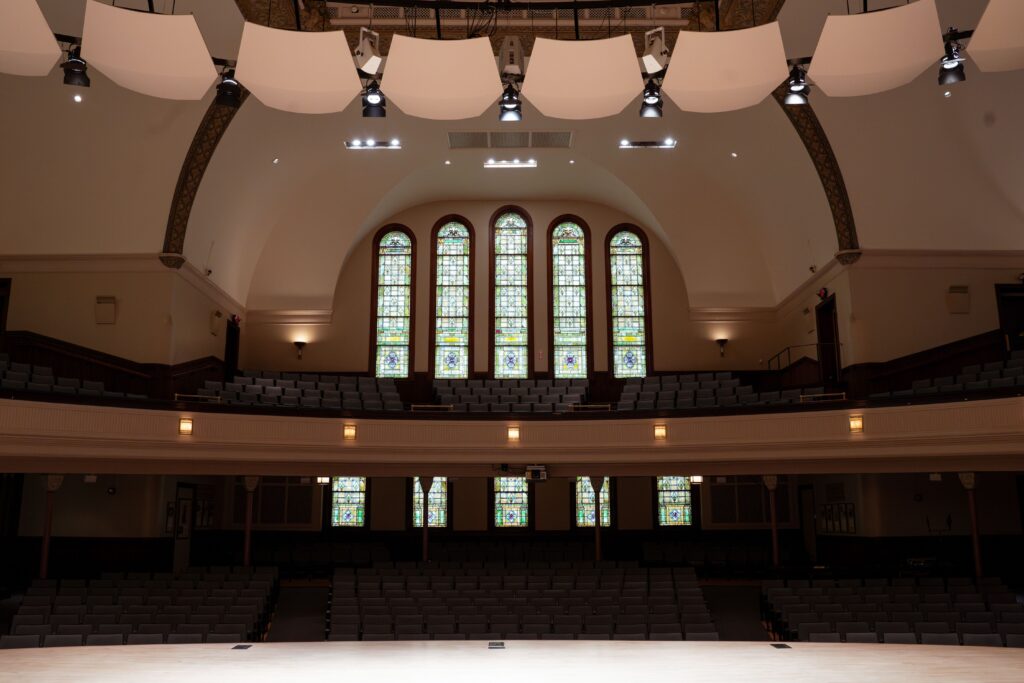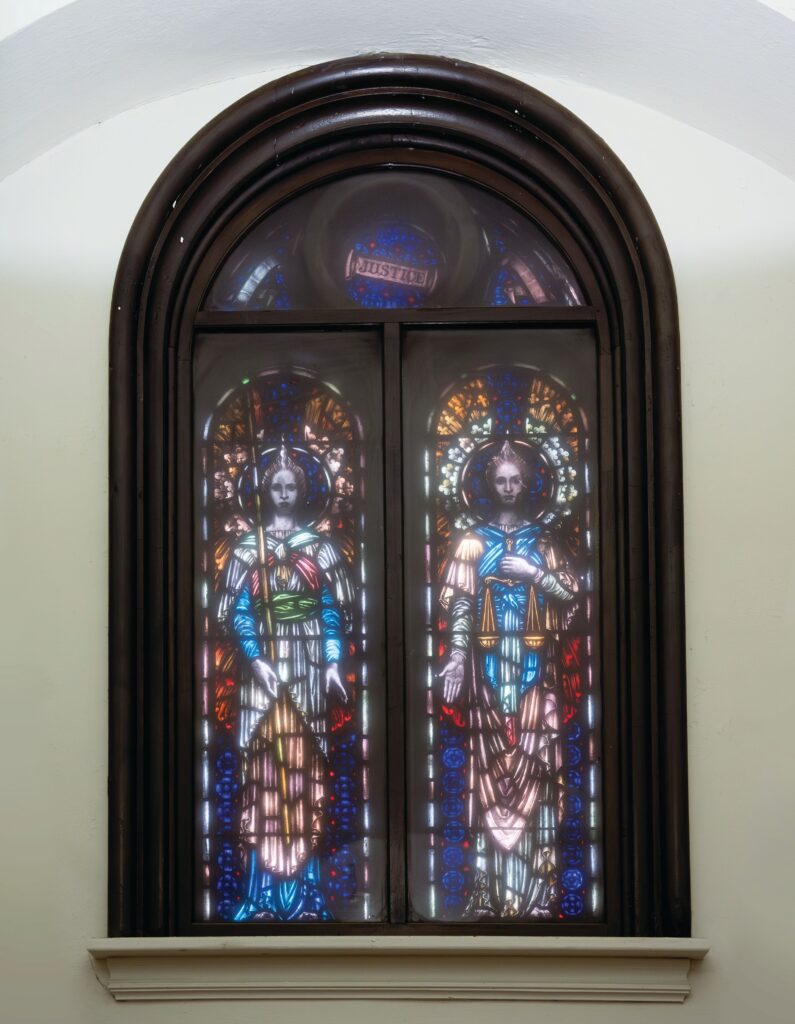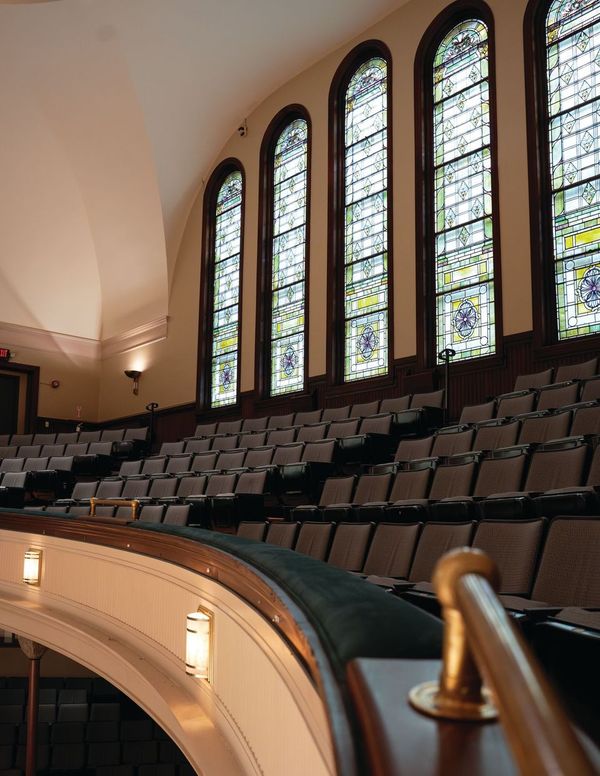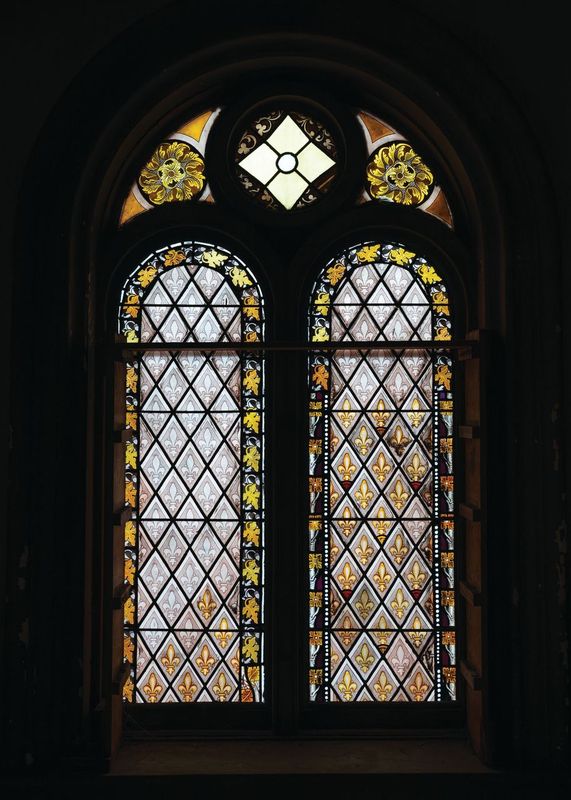
Rochester has long been a city shaped by music, with a rich history of renowned institutions like the Eastman School of Music (1921) and The Rochester Philharmonic Orchestra (1922), alongside iconic concert venues such as Kodak Hall at Eastman Theatre (1922), and Water Street Music Hall (1977). We’re lucky to be part of a community that values arts education for our kids, helping them grow into the next generation of musicians and artists who will keep our city’s creative spirit alive.
The Hochstein School has played a vital role in this mission for more than a century. The school is housed in the historic Central Presbyterian Church building, a Romanesque Revival style beauty that’s impossible to miss on North Plymouth Avenue. Built in 1849, the church was at risk of being torn down in the 1970s as its congregation shrank and maintenance costs soared. But Hochstein recognized the structure’s value and potential, saving the historic structure while expanding its opportunity to teach even more children for decades to come.
Early beginnings—the Central Presbyterian Church
Established in 1836 as Bethel Church and later renamed Central Presbyterian church, the structure was built with intricate brickwork, grand arches, and stained-glass windows. As the city’s population and church membership grew, expanding the facilities became essential to accommodate the congregation and the increasing number of Bible school attendees.
The church stood next to the home of Isaac and Amy Post, prominent Hicksite Quakers and influential leaders in the nineteenth-century abolitionist and women’s rights movements. The couple frequently hosted abolitionist meetings and renowned reformers such as Frederick Douglass, Susan B. Anthony, and Sojourner Truth. Their home also served as a station on the Underground Railroad, sheltering up to twenty escaped slaves at a time.
After Amy Post’s death in 1889, the church acquired the land and constructed an addition, which included a school wing and a large sanctuary. Unlike traditional church sanctuaries, this design emphasized “the community of God” with a semicircular seating arrangement, creating a more inclusive and immersive experience for the congregation. This layout allowed everyone to see, engage, and fully participate in church services from multiple vantage points. It was the largest auditorium in Rochester at the time, becoming a distinguished venue for traveling preachers and musicians, and hosting funeral services for Frederick Douglass (1895), President William McKinley (1901), and Susan B. Anthony (1906).


Though the church’s role in the city evolved over time, its legacy of inclusivity and community impact endured. That spirit lives on today through the Hochstein School, which now calls this historic space home.
“I’ve always believed that this land and its history embody our mission of making high-quality opportunities and education accessible to all students, regardless of their background or financial means,” says Dr. Gary Palmer, president and executive director of the Hochstein School, who has been with the institution since 2001. “Hochstein has always had a very diverse population, serving a broad and vibrant community both within our walls and throughout the community.”
A new home for The Hochstein School
The Hochstein School was founded in 1920 in memory of David Hochstein, a gifted violinist from Rochester whose promising career was cut short when he was killed in action during World War I. Hochstein had studied under some of the world’s greatest musicians and was on the cusp of international fame when he enlisted in the U.S. Army and was sent to fight in France. He was killed in the Battle of Argonne in October 1918 at twenty-six years old.
Dedicated to honoring his legacy, Hochstein’s mother, Emily, with the support of local musicians and educators, founded the David Hochstein Memorial Music School in 1920, ensuring that students of all backgrounds had access to high-quality music education, regardless of their financial means. Starting in the Hochstein family’s home on Joseph Avenue, the school quickly outgrew its space as it gained popularity, prompting a move into a larger space.
The school moved into a newly constructed building in 1928, but by the early 1970s, it had once again outgrown its building and needed a permanent home to accommodate its expanding programs and student body. In 1974, the school seized the opportunity to acquire the former Central Presbyterian Church. With support from the Presbyterian Church, the United Way, the Rochester Department of Community Development, and community fundraising efforts, funds were secured for exterior and interior renovations.


Over the following decades, the school undertook several renovation projects, including improvements to the lowerlevel studios in the 1980s. Major capital campaigns later funded the full renovation of the educational facilities and the transformation of the historic sanctuary into what is now the Performance Hall at Hochstein.
“I absolutely love the performance hall and consider it one of Hochstein’s greatest treasures,” says Palmer. “As a performer myself, I can say it’s a truly wonderful space to play in. In addition to hosting our own school ensembles, we welcome the Rochester Philharmonic Orchestra, the Rochester Gay Men’s Chorus, and many other community groups and events.”
The next generation
Stepping into the Hochstein building today, you can’t help but sense its storied past. The soaring ceilings, tall stainedglass windows, and intricate woodwork recall the inspiring sermons and historic figures who once filled these halls. But now, the space resonates with the sounds of students practicing their instruments and the energy of live performances. Today, the school welcomes more than 1,900 students, offering music lessons, ensembles, dance instruction, and expressive arts programs.
The building’s history isn’t lost on this next generation of artists. For them, the building is more than just a place to learn and practice, it’s a space where the past and present come together as they shape their artistic path. “The stage is exciting because I can look out at all the people watching our concerts, and it makes me feel like I’m part of something important,” says thirteen-year-old junior wind symphony trumpet player Ava Roote. “I really love the stained glass at the Hochstein School because it’s such a beautiful and unique part of the building. It feels amazing to perform in a place with so much history.”
To find out more about the Hochstein School, including additional history about the institution, visit Hochstein.org.
This article originally appeared in the May/June 2025 issue of (585).
Views: 67




